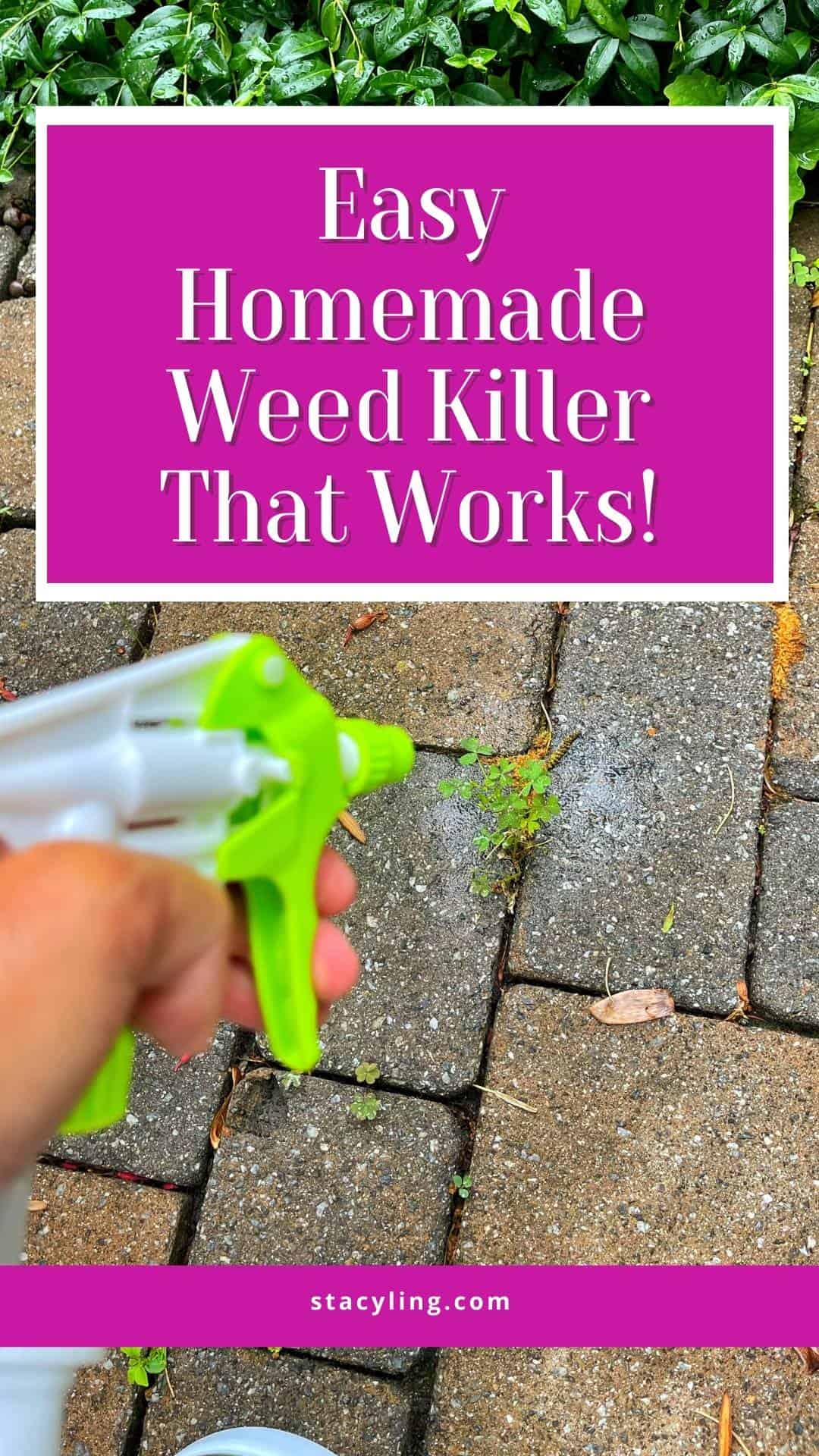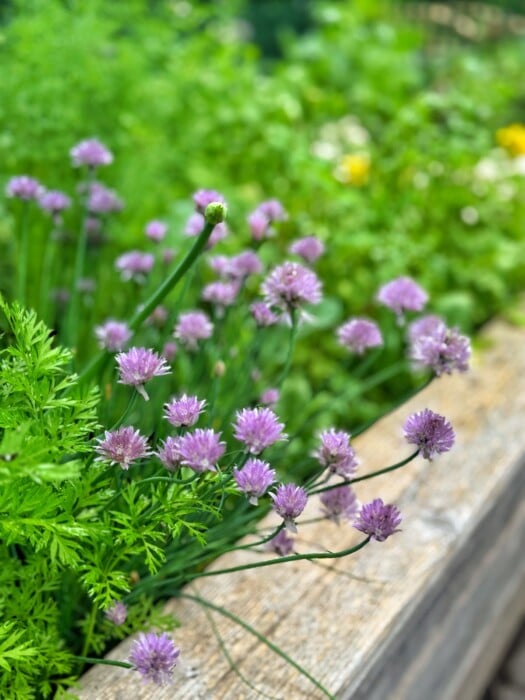Looking for easy ways to get rid of weeds naturally? There are lots of simple ways to suppress or kill weeds without herbicides. This post shares a simple recipe for homemade weed killer with vinegar that works, plus some bonus methods to naturally kill weeds.
Weeds: the uninvited guests that pop up everywhere. They’re persistent, annoying, and seemingly impossible to eradicate completely. Keeping up with them can feel like a never-ending battle.
Our home has expansive gardens and a plethora of potential weed havens. I’m committed to organic gardening, so hand-pulling and hoeing are my go-to methods. However, with two ponds, two dogs, a family, a well, and a nearby brook, responsible pesticide use is crucial for certain areas of my gardens.
While hand-pulling is effective, it’s not always feasible, especially for large areas like patios and pathways. That’s why I’ve turned to simple, homemade weed killers and natural methods.
If you crave a beautiful garden and lawn without resorting to harsh chemicals, keep reading. I’ll share how to kill weeds using everyday household items and a pet-safe weed killer recipe that actually works!
(Posts on stacyling.com may contain affiliate links. Click HERE for full disclosure.)

⚠️ Important Limitations: Please Read Before Using
This homemade recipe is a powerful tool against weeds and a great alternative to commercial herbicides, but it’s crucial to understand how it works and where to use it safely to protect your garden. Here’s what you absolutely need to know:
- This is a NON-SELECTIVE Killer: It will harm or kill any plant it comes into contact with, including your lawn grass, flowers, and vegetables. It does not know the difference between a weed and a prized perennial. Be extremely careful with overspray.
- The Salt Can Sterilize Your Soil: Salt builds up in the soil over time and can prevent anything from growing there in the future. For this reason, only use this solution in areas where you want to kill vegetation long-term, such as deep in driveway cracks, in gravel paths, or between patio pavers. Do NOT use it in or near your garden beds or lawn.
- It Primarily Kills the Leaves: This spray is most effective on young, annual weeds. It works by drying out the foliage it touches. It may not kill the deep, established root systems of stubborn perennial weeds like dandelions, thistle, or poison ivy. Expect that some of these tougher weeds may grow back and require re-treatment or manual pulling.
- Use Caution Around Pets and Children: While the ingredients are common household items, it’s always safest to keep pets and children away from treated areas until the spray has completely dried.
(Posts on stacyling.com may contain affiliate links. Click HERE for full disclosure.)
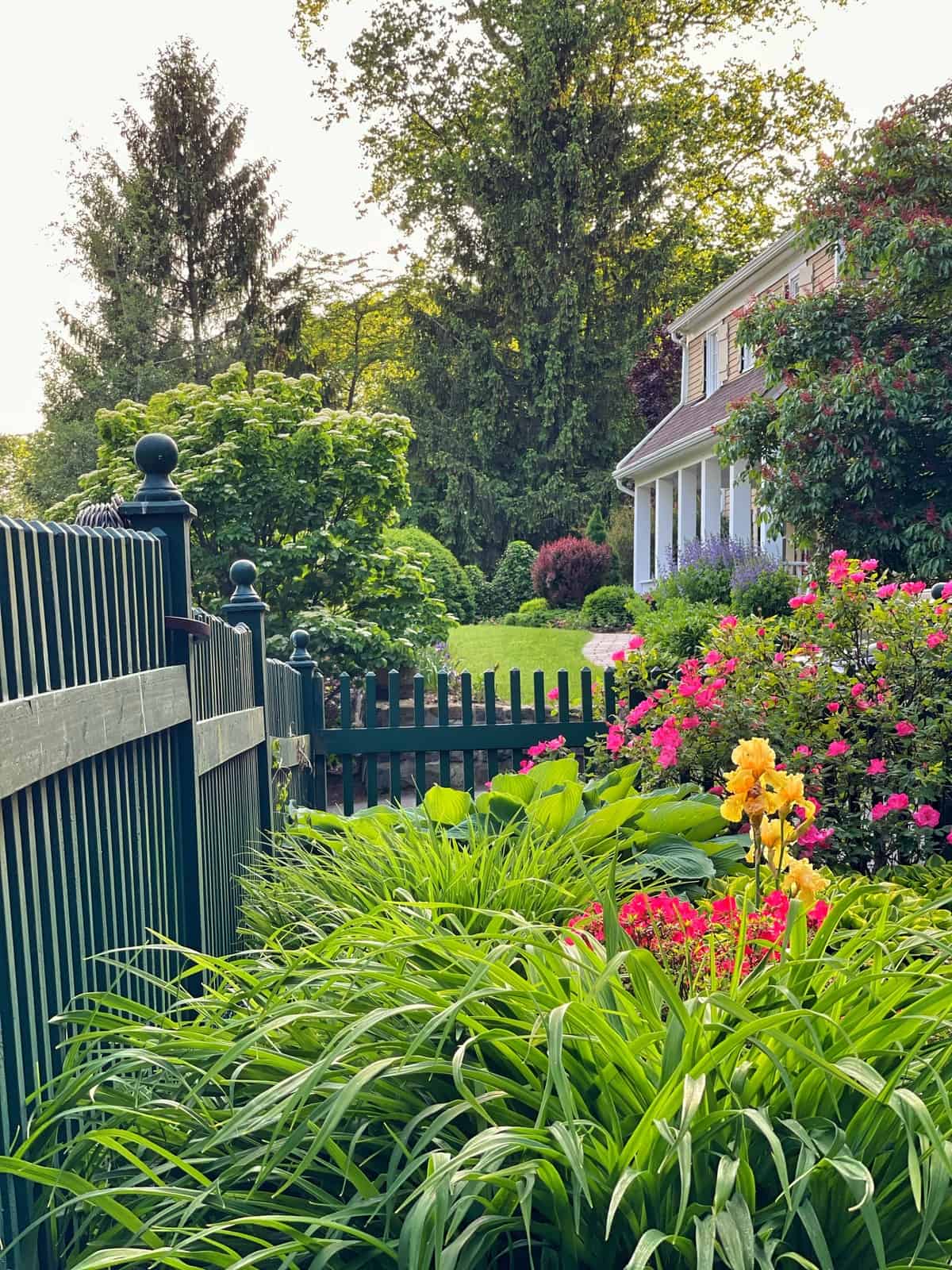
How to Manage Weeds Naturally in the Garden
What’s the best method for managing weeds in the garden? For starters, use a combination of pulling weeds and planting smart. Grow plants slightly closer together to help crowd out weeds or use ground covers to help keep them from popping up. Add lots of mulch and make it a priority to keep plants healthy.
In addition to planting smart, pull weeds as you see them and be sure to get at them from the root. If you walk your gardens every day, pull what you see when you see them. Don’t wait to remove them because weeds can get out of control pretty quickly.
In my gardens, I love to use this hand weeding tool because it gets unwanted vegetation out by the roots in record time, get under deeply embedded rocks, and even doubles as a planting tool. And a garden kneeler is a great assistant while you are hand weeding because it makes it feel more comfortable while protecting your knees and back. But I also love to use this stand-up weeding tool for those days I don’t feel like bending over that helps get plants out with the root.

Still, even the most prudent weed pullers sometimes need a little extra help. As part of a multifaceted approach to removing, killing, and suppressing weeds, it’s also effective to use homemade weed killers.
When I use this kind of product, I look for a pet-safe homemade weed killer that uses simple ingredients I already have on hand. If this is what you’re looking for in a natural weed solution, then you’ll love my easy recipe. I’ve got two dogs and lots of wildlife and pollinators here, so I want to be careful when using anything in the gardens.
A word of caution about homemade weed killers though. Use these methods sparingly because they are non-selective (which means they will also kill other plants, including your lawn) and they can also kill the good microbes in your soil, too.


Simple Recipe for Homemade Weed Killer That Works
This homemade weed killer with vinegar recipe is my go-to method when I don’t want to pull them or just need a little extra weed management support. It is vinegar-based and covers large areas in a reasonable amount of time. And with the size of my patios, pathways, and garden areas, I need to cover more ground.
What I love most about this recipe is there is NO NEED to use synthetic pesticides to get the same effect. So if you are looking for ways to kill weeds organically without having to pull them, try this simple recipe for homemade weed killer instead.
But like I said before, keep in mind this natural weed killer recipe is non-selective and kills both bad and good microbes. For me, I only use this in hardscaped areas and protect my plants if they are nearby.
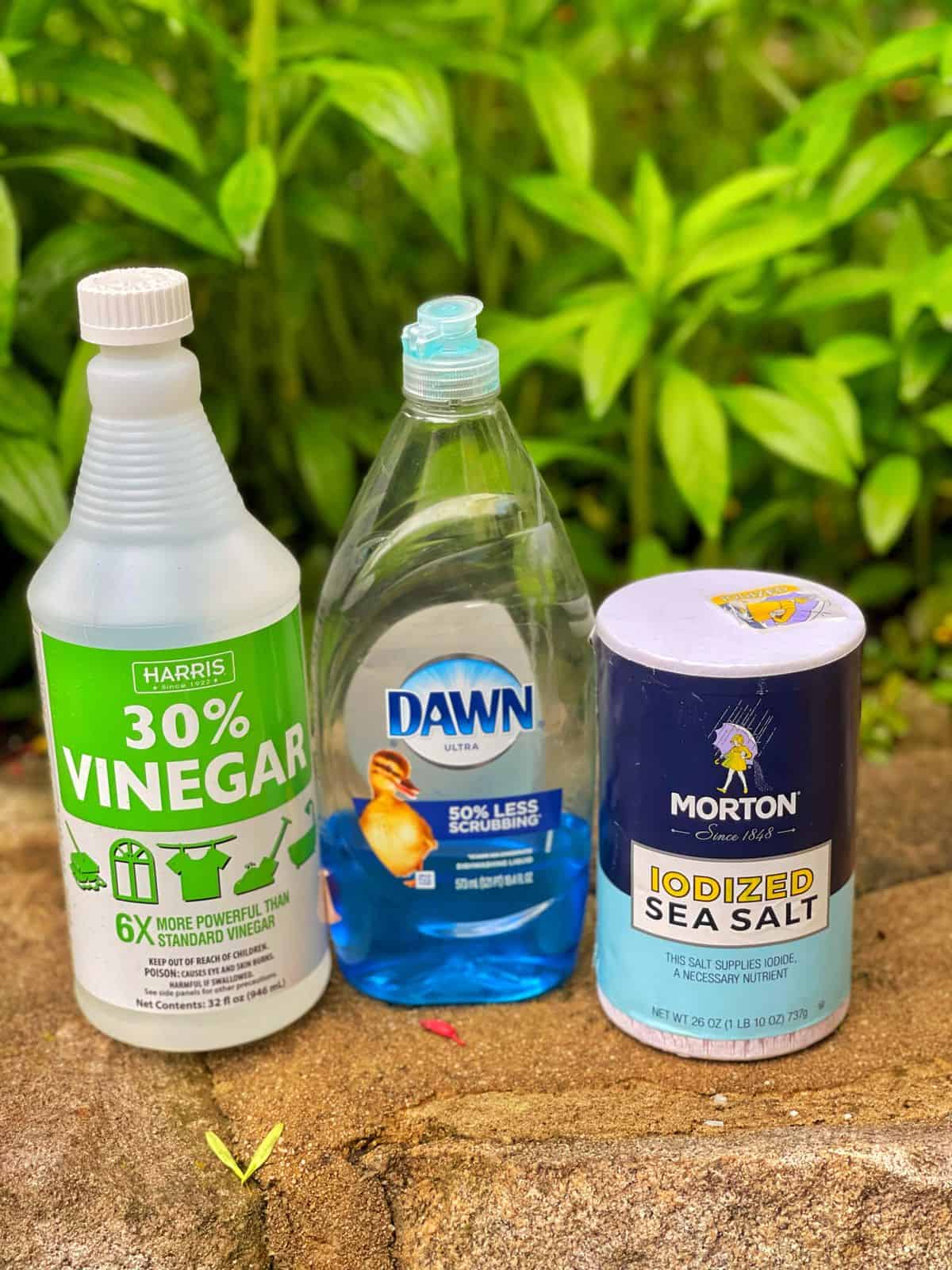
Ingredients for Homemade Weed Killer
Not much is needed to make your own homemade weed killer recipe and you likely already have the ingredients laying around your house.
Here’s what you need:
- Distilled, apple cider, or cleaning vinegar
- Table Salt
- Dish soap
- Spray bottle
The main ingredient is vinegar. While you can use any distilled or apple cider vinegar, vinegars containing more than 11% acetic acid will work best to burn and kill weeds. I like to purchase this vinegar when making this.
While any dish soap will do, I think Dawn dish soap works best. But why do you need dish soap if vinegar is the acting ingredient? Because the dish soap helps the vinegar stay on the surface longer.
Bonus Tip: Be sure to apply this recipe on a sunny day so it does not get washed away.

How to Make Homemade Weed Killer with Vinegar
Making homemade weed killer is very simple. Gather your ingredients and a spray bottle and follow these instructions:
- Start with a gallon of vinegar.
- Add one cup of salt and 1 tablespoon of dish soap.
- Simply pour the ingredients into a spray bottle and shake well.
How to Apply Vinegar Weed Killer
Before applying, wear gloves and protective eyewear. It is best to apply the vinegar method on a dry sunny day with little to no wind, so the rain does not wash it away. The sun helps dry out and kill the weeds so timing is everything. It’s also best to apply on a non-windy day so the overspray does not hit other plants and vegetation you want to keep!
To apply, spray directly on weeds and the foliage. Try to get all of the plant, including the base so the solution gets to the root as well. This natural weed killer recipe is non-selective so be careful not to spray other plants. Use a piece of cardboard or something to keep the overspray from hitting other plants if need be.

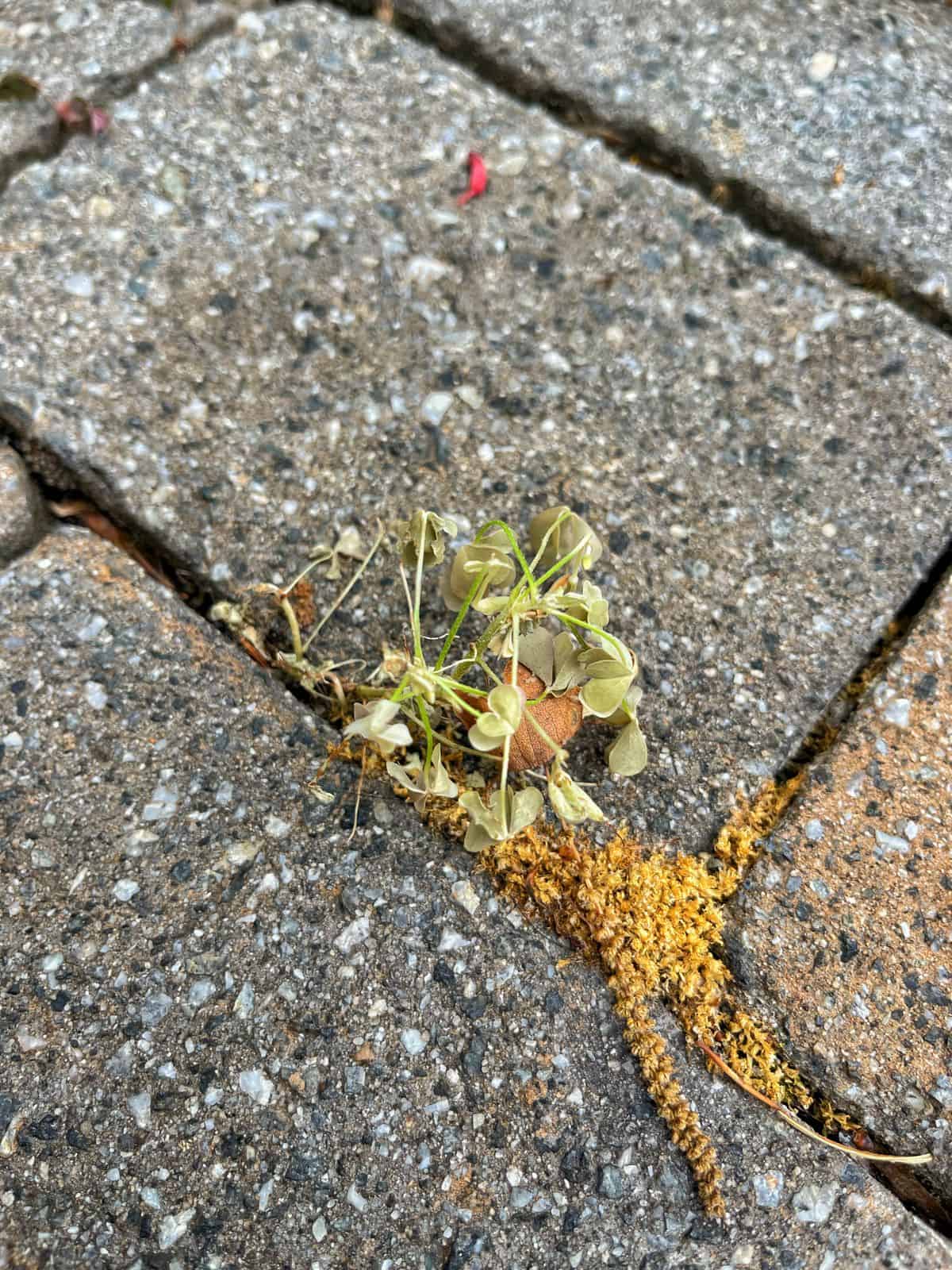
How This Homemade Weed Killer Works: The Science Behind the Spray
Ever wonder why this simple combination is so effective? It’s not magic—it’s simple chemistry. Each ingredient plays a specific scientific role in tackling unwanted weeds. Understanding them will help you use this spray more effectively.
The Power of Vinegar (Acetic Acid)
The active ingredient in vinegar is acetic acid, which works as a desiccant. This means it draws moisture out of a plant’s leaves, causing them to dry up, wither, and die. However, it’s important to know that not all vinegars are created equal:
- Standard White Vinegar (5% Acetic Acid): This is the common vinegar you find in any grocery store, and it’s what this recipe is designed for. Its 5% concentration is effective at killing young, annual weeds and new growth, and it’s relatively safe to handle.
- Horticultural Vinegar (20-30% Acetic Acid): This is a much stronger, industrial-grade product found at garden or farm supply stores. Its higher concentration can tackle tougher, more established weeds, but it is also much more caustic. It can cause burns to the skin and damage to the eyes and should always be handled with safety gear, including gloves and protective eyewear.
The Lasting Impact of Salt (Sodium Chloride)
Like vinegar, salt also acts as a powerful desiccant, dehydrating plants. However, its biggest impact is on the soil. Salt buildup can render soil sterile over time, killing beneficial microorganisms and preventing any future plant growth. This is what makes it a powerful tool for deep cracks in a driveway, but also why it is absolutely critical to keep it away from your lawns and garden beds.
Why Dish Soap is the Secret Helper
Dish soap is the essential “fixer” in this recipe. It acts as a surfactant, or wetting agent. Many weeds have a waxy or slightly hairy leaf surface that causes liquids to bead up and roll right off. The dish soap breaks down this waxy surface tension, allowing the vinegar and salt solution to stick to and penetrate the leaves, making the entire spray dramatically more effective.

Homemade Weed Killer With Vinegar: How Many Days Does It Take Vinegar to Kill Weeds?
Vinegar can start to kill the top growth of weeds in as little as a few hours. Some browning is typically seen almost immediately. You can see in the image above that after 12 hours the weed I sprayed is starting to die. It can take up to a few days for the weed to be fully suppressed.
How long does vinegar keep weeds from growing?
This homemade weed killer with vinegar is not a permanent solution, and weeds will likely grow back in a few weeks. You can apply the solution again when you start to notice growth returning or combine with other, longer-lasting weed management techniques.

Critical: Avoid Using This Spray in These Areas
To prevent accidental damage to your lawn and garden, it’s essential to understand that this powerful spray is for spot-treating specific problem areas only. For the health of your landscape, please never use this solution in the following places:
- To Clear Large Patches of Weeds. This recipe is designed for precision work, like tackling individual weeds in cracks or along a border. It is not an appropriate or environmentally responsible solution for clearing large, overgrown areas.
- On Your Lawn. This is the most common mistake gardeners make. This spray is non-selective and will kill your grass just as effectively as it kills the weeds, leaving you with large, brown, dead patches that will not recover.
- In or Near Flower Beds and Shrubbery. Even the most careful spraying can lead to overspray drifting onto the leaves of your favorite perennials, annuals, and shrubs. Furthermore, the salt can leach into your garden soil with rain, damaging the roots of nearby plants you love.
- Anywhere in Your Vegetable Garden. Due to the long-term soil-sterilizing effects of the salt, you should never use this solution in or near areas where you grow food for consumption. Stick to manual weeding or other food-safe methods in your veggie patch.
4 More Ways to Kill Weeds Naturally in Your Garden
If you want to try killing or suppressing weeds without having to pull or hoe them out, give one of these methods a try. While these are all pet-safe weed killers, each method is non-selective meaning it will kill anything around it so be mindful with the application of each. They are easy to do and you likely have the products on hand in your home.
- Boiling Water
- Propane Torch
- Rubbing Alcohol Solution
- Corn Gluten

Boiling Water Method to Kill Weeds
If you have a few weeds to remove, boiling water is an easy way to kill them. I tend to use this method on small pathways and patio areas because there isn’t vegetation I want to protect around it.
It’s not as easy to use when you have more weeds to get at or larger areas to weed because you have to keep going in and out to boil water. But it is a very effective method that works quickly.
Simply boil water and pour it on the weeds on a warm, dry sunny day. That’s it!

Propane Torch Method to Killing Weeds
I’ve tried this method before and it takes a little more doing so it’s my least favorite. And to be honest, I prefer not to do it. If you want to try it though, you’ll need a propane weeding torch like this that is specifically made for killing weeds. The idea behind it, is you burn the weed down to the root.
I tried this in my driveway years ago where lots of weeds were sprouting, and found the process to be a bit laborious. It took a while to burn each weed, I had a lot of weeds to deal with, and you go through the propane pretty quickly. Plus, it took some doing to get the torch going.
Now it could have been the amount and/or type of weeds I had, but to me, it was more work standing there holding the torch and waiting for each weed to burn and die before moving on to the next one.
This method just wasn’t for me.

The Rubbing Alcohol Method
If you’d rather go with another homemade weed-killer solution, a rubbing alcohol mix is pretty straightforward to make. To prepare it, simply mix one quart of water to dilute two tablespoons of rubbing alcohol.
Note: Before applying this method to weeds, wear gloves and protective eyewear.
Simply apply the rubbing alcohol mixture on a dry sunny day without wind. Saturate the foliage, stem, and plant base to get at the roots. I don’t typically use this method but it does work.

How to Use Corn Gluten to Suppress Weeds
Unlike the aforementioned approaches to weed control, corn gluten does not kill weeds but rather helps suppress them when applied at the right time. It is most commonly used to keep crabgrass at bay in the lawn, but can also be applied in garden beds between plants to help keep weed seeds from germinating. For this method to be effective though, it must be applied with crabgrass seed germination.
How do you know when that is?
In spring when the forsythia starts blooming in your area until the last bloom drops, is the right time to apply it. Simply spread it over the soil and water it in well after.
Although it’s important to water it in after applying it, you’ll want to apply corn gluten on a dry day with a few dry days in the forecast so it has a chance to work without getting washed out by inclement weather.

How to Kill Weeds Without Killing Grass and Plants
As you’ve likely noticed, many weed control methods, including homemade vinegar solutions, can be harmful to desirable plants. So, how can you eliminate weeds without damaging your garden?
While herbicides offer one solution, a more natural approach involves consistent hand-pulling. This becomes more manageable after an initial application of vinegar weed killer, which targets the majority of weeds. Regular weeding then helps to address any new growth.
Alternatively, you can use a cardboard barrier to protect specific plants while applying weed killer. This is why I primarily reserve these methods for hardscaped areas, minimizing any risk to my lawn and garden.
Long-Term Weed Management
The key to long-term weed management isn’t one perfect solution. Instead, the best way to control weeds naturally is by using a multifaceted approach. Combine pulling weeds by hand, natural weed killers, smart planting, and ground covers like mulch to help keep weeds at bay on your property long term.

Frequently Asked Questions (FAQ)
Here are answers to some common questions about making and using this homemade weed killer.
How long does it take to see results? You will see results very quickly, often within a few hours on a hot, sunny day. The sun helps accelerate the desiccation (drying) process, so it’s always best to apply this spray during the sunniest part of the day. Expect to see weeds fully wilting and browning within 24 hours.
Does this weed killer kill the roots? This spray is primarily a foliar contact killer, meaning it kills the leaves and top growth it touches. For young annual weeds with small taproots, this is often enough to kill the entire plant. However, for stubborn perennial weeds with deep, established root systems (like mature dandelions or thistle), it may not kill the entire root, and the weed can grow back.
Is it truly safe for pets? While the ingredients are less toxic than many commercial herbicides, the salt is not good for pets to ingest. The safest and most responsible approach is to keep pets and children out of the treated area until the spray has completely dried. Once fully dry, it is much safer for them to be around the area.
Can I use Epsom salt instead of table salt? No, you should not substitute Epsom salt (magnesium sulfate) in this recipe. Epsom salt is actually used by gardeners to provide essential magnesium to plants and can help them grow. For this weed killer to be effective, you must use regular table salt or rock salt (sodium chloride), which has the desired dehydrating effect on plants.
Will this work on poison ivy or crabgrass? Unfortunately, this simple spray is generally not effective against very tough, waxy, or invasive plants like poison ivy, English ivy, or established crabgrass. These plants often have extensive root systems and protective leaf coatings that require more targeted (and often manual) removal methods.
How long after spraying can I plant something in that spot? You should never plant anything in an area treated with this solution. Because the salt in this recipe can sterilize the soil long-term, it is only meant for places where you don’t want any future growth. If you need to remove weeds from a garden bed where you intend to replant, you must use an alternative method like manual pulling or applying boiling water.
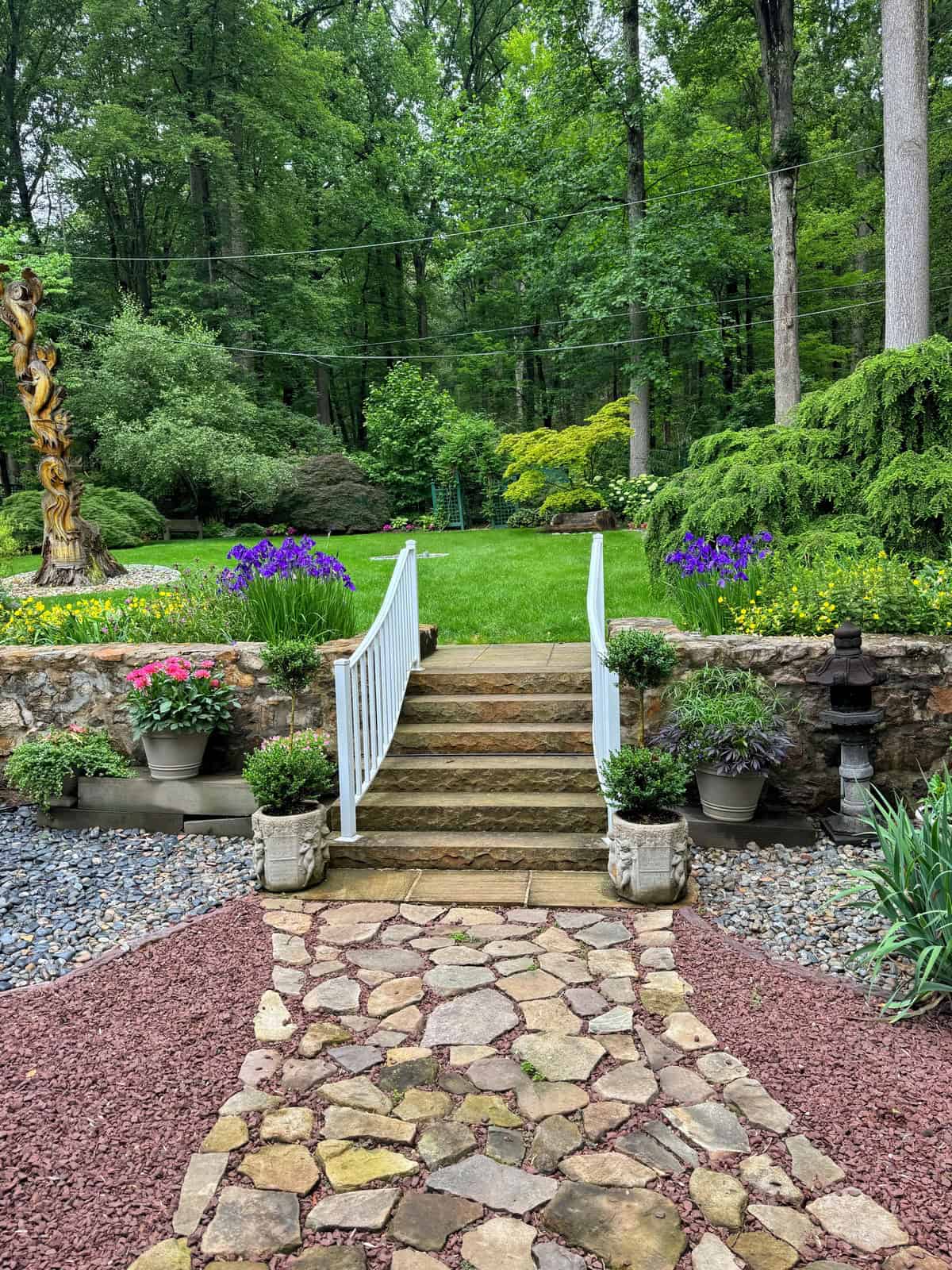
Final Thoughts About Making Homemade Weedkillers
In short, homemade weed killers are non-selective, meaning they can harm any plant they touch, including your lawn. Use them with caution, and avoid repeated applications as they can alter soil composition.
Always wear protective gear, such as gloves and eye protection when handling herbicides. If you have any questions, reach out to your local cooperative extension or master gardener helpline for advice tailored to your area.
While there are many weed control methods, hand-pulling is often the best for garden beds. It’s organic, effective, and eliminates the risk of harming nearby plants. Though it requires some effort, regular weeding keeps it manageable and benefits your garden in the long run.
Have you ever made your own homemade weedkillers before? If so, what have you used? I would love to know more in the comments below.
Want to learn more about homemade vinegar recipes and more? I was interviewed about this very topic by USA Today. You can read the article here.
To drill down on more beginner gardening techniques and tips, please read these posts:
- Flower Gardening 101
- Growing a Cut Flower Garden for Beginners
- Container Garden Ideas for Beginners
- How to Start a Vegetable Garden
- Herb Gardening for Beginners
Thank you so much for following along.
Enjoy a beautiful day! xo






